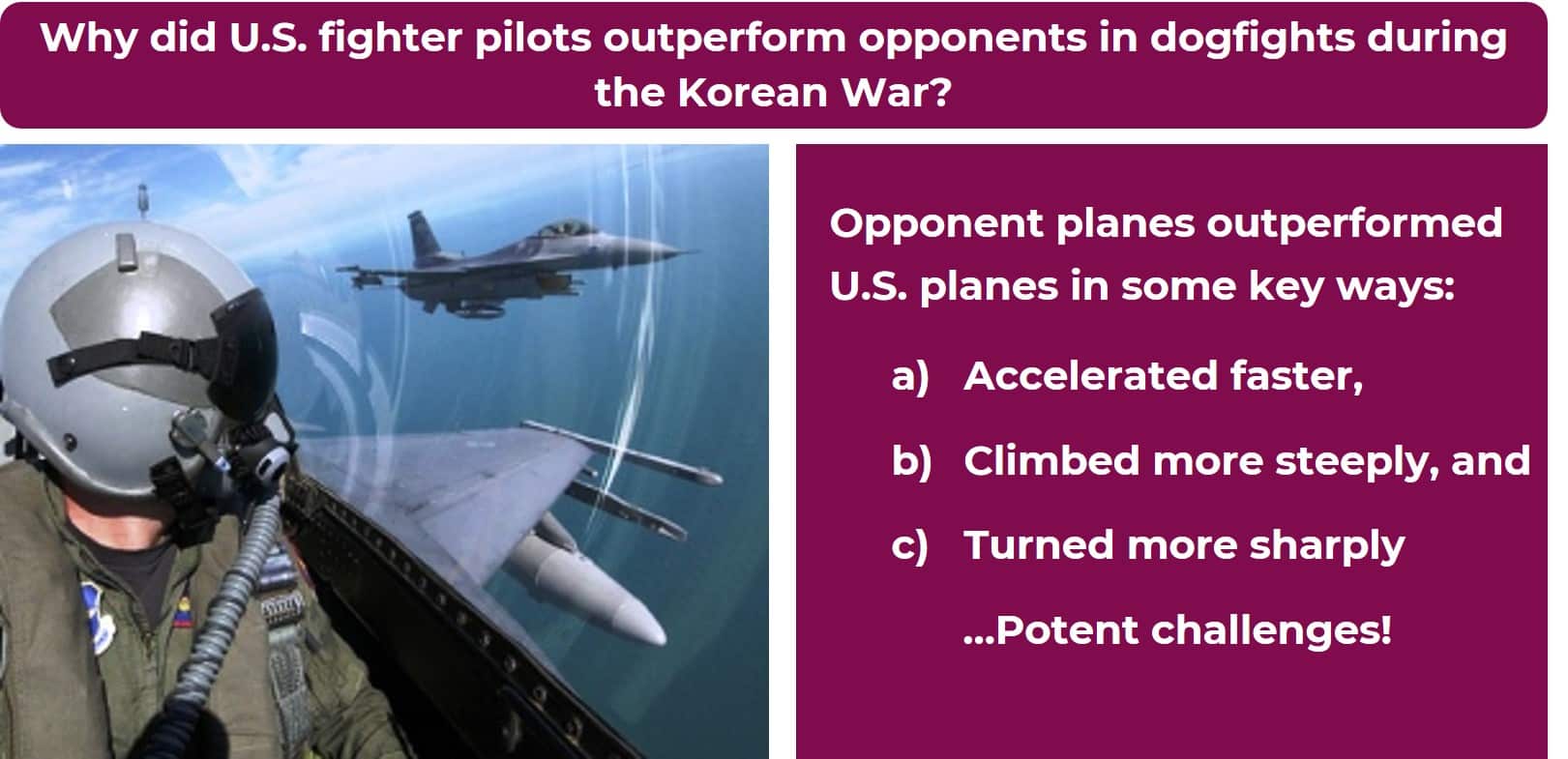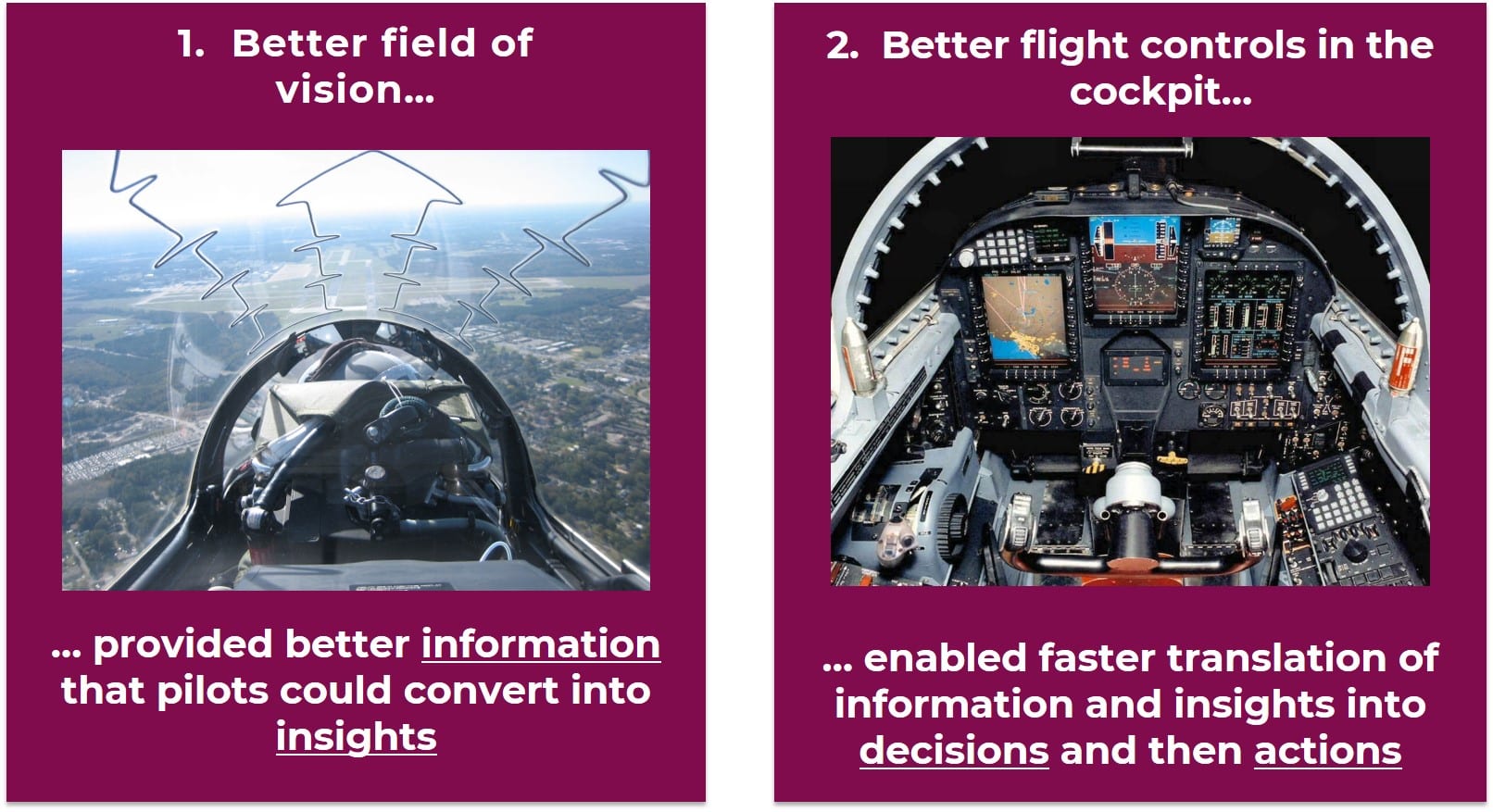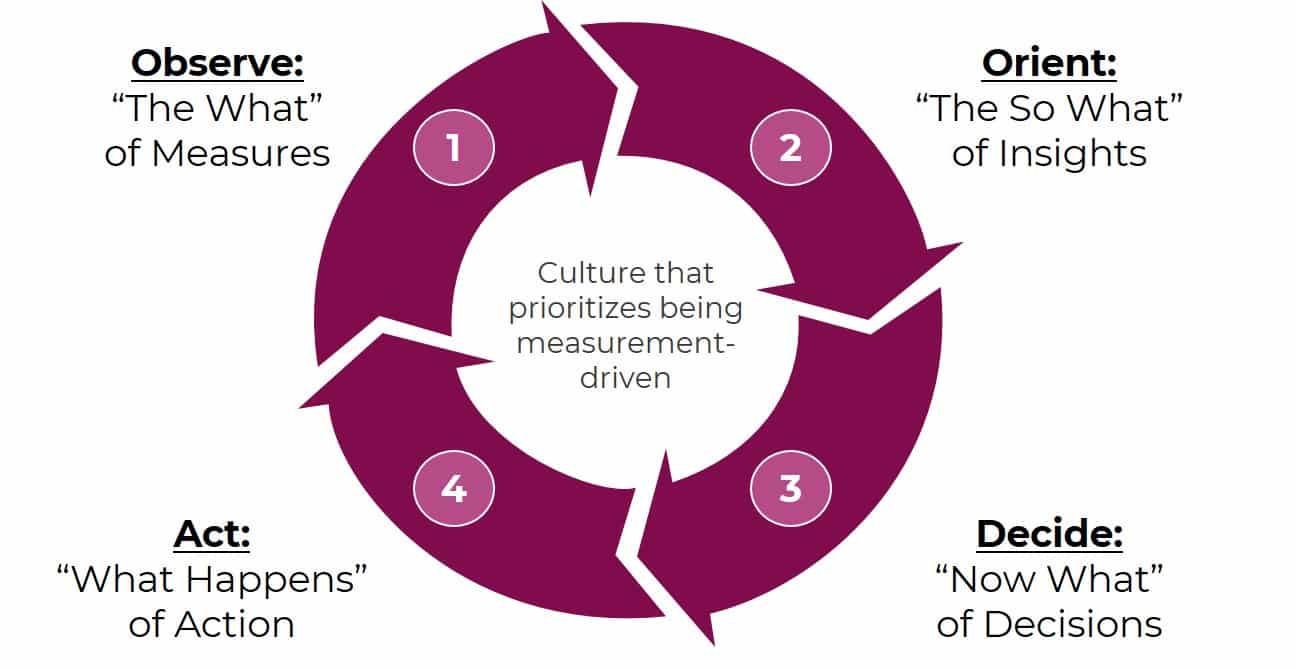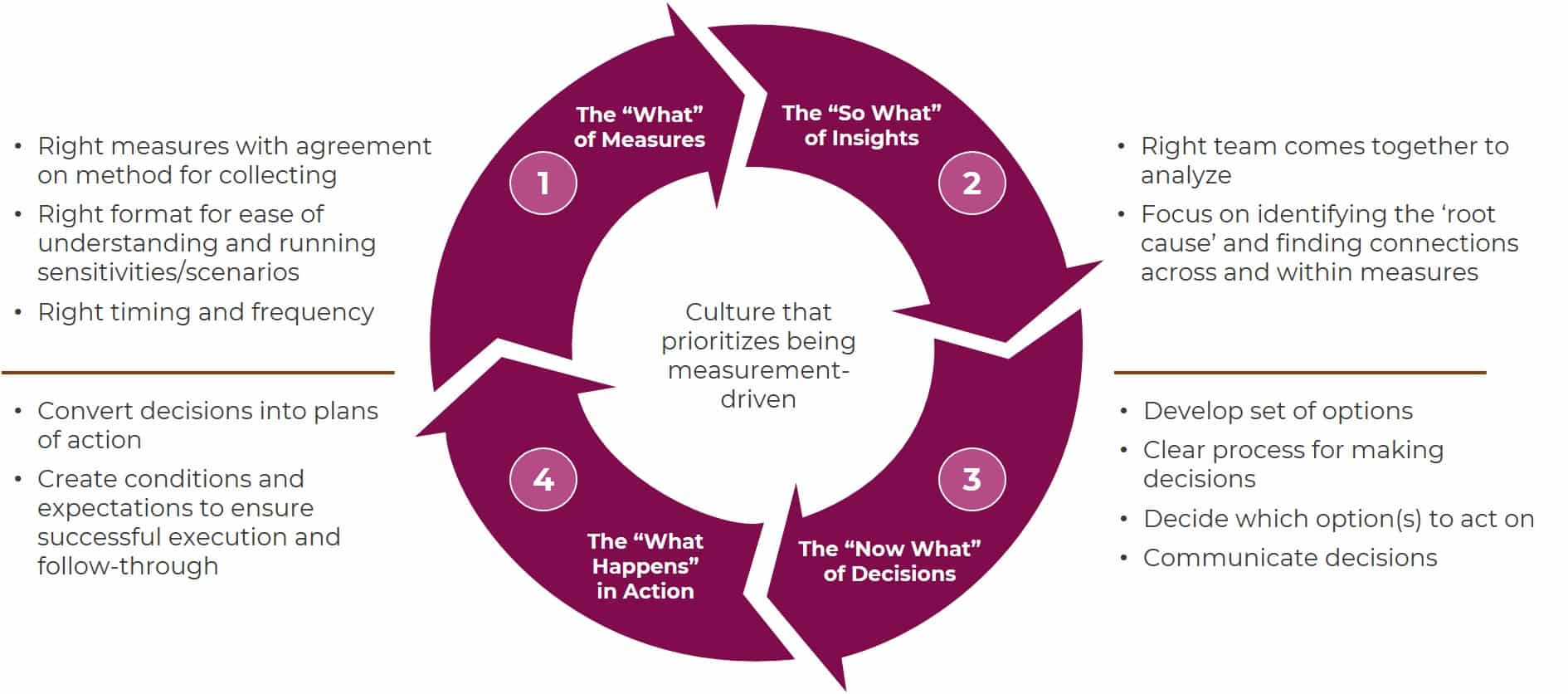PUTTING MEASUREMENT TO WORK
Measurement to maximize impact isn’t just about collecting information, but about how you and your organization use information to transition from being results-driven to being measurement-driven.
To put measurement to work, organizations must become strong in four areas, which are well illustrated by the experience of John Boyd, an Air Force Colonel during the Korean War. Colonel Boyd was tasked to answer the question: Why were U.S. planes outperforming their opponents in aerial dogfights? He discovered that the opposing planes actually outperformed U.S. planes in some key ways. They could accelerate faster, climb more steeply and turn more sharply – all pretty potent challenges!

However, U.S. pilots and their planes had two offsetting advantages. First, U.S. pilots possessed a better field of vision – they literally sat higher in the cockpit and could see more (and in those days battles were fought by sight). Second, U.S. pilots enjoyed more advanced flight controls, which allowed planes to respond more quickly to a pilot’s decisions.

U.S. pilots had better information from sitting higher in their cockpits, which they could quickly turn into insights to drive decisions, and then translate those decisions into actions through better flight controls. Together, these advantages offset the opponents’ strengths in acceleration, climbing and turning.
Based on this analysis, Colonel Boyd created a framework known as the Boyd Cycle, or the OODA Loop: Observe, Orient, Decide and Act.

In the Korean War, Colonel Boyd found that the ability of U.S. pilots to go through the OODA loop faster than their opponents neutralized the advantages of the opponent planes and allowed U.S. pilots to win more often in aerial battles.
In education, the OODA loops is sometimes translated into “The What” of measures, “The So What” of insights, “The Now What” of decisions, and the “What Happens” of actions.
Organizations seeking to transition from being results-driven to measurement-driven have to first build their skills in identifying and capturing the right measures – “The What.” However, in order to realize the value of this information, organizations must also build expertise in the other steps of the loop.

Getting good at “The What” involves: Deciding on the right measures of inputs, outputs, outcomes and (in the case of parent empowerment) infrastructure; identifying targets where appropriate; and then collecting this data in the right format, timing and frequency to be useful, while simultaneously not allowing this effort to overwhelm the organization.
Getting good at the “So What” requires bringing the right people together to develop a root cause analysis of why something is happening.
Getting good at the “Now What” is all about decision-making: Developing a set of options; using a clear process for making decisions (perhaps using a decision-rights framework such as RAPID); and ensuring decisions are made and then communicated.
Last, getting good at the “What Happens” is about execution. As Thomas Edison once said, “vision without execution is hallucination.” Organizations must be good at developing workplans and corresponding expectations to help and hold people accountable for successful execution.
And all of this then brings an organization back to capturing the right measures to nimbly begin the cycle over again.

225 Franklin Street, Suite 350
Boston, MA 02110
617.912.8800
This work is licensed under a Creative Commons Attribution-NonCommercial-ShareAlike 2.0 License (CC BY-NC-SA 2.0)
Click Here to learn more.
